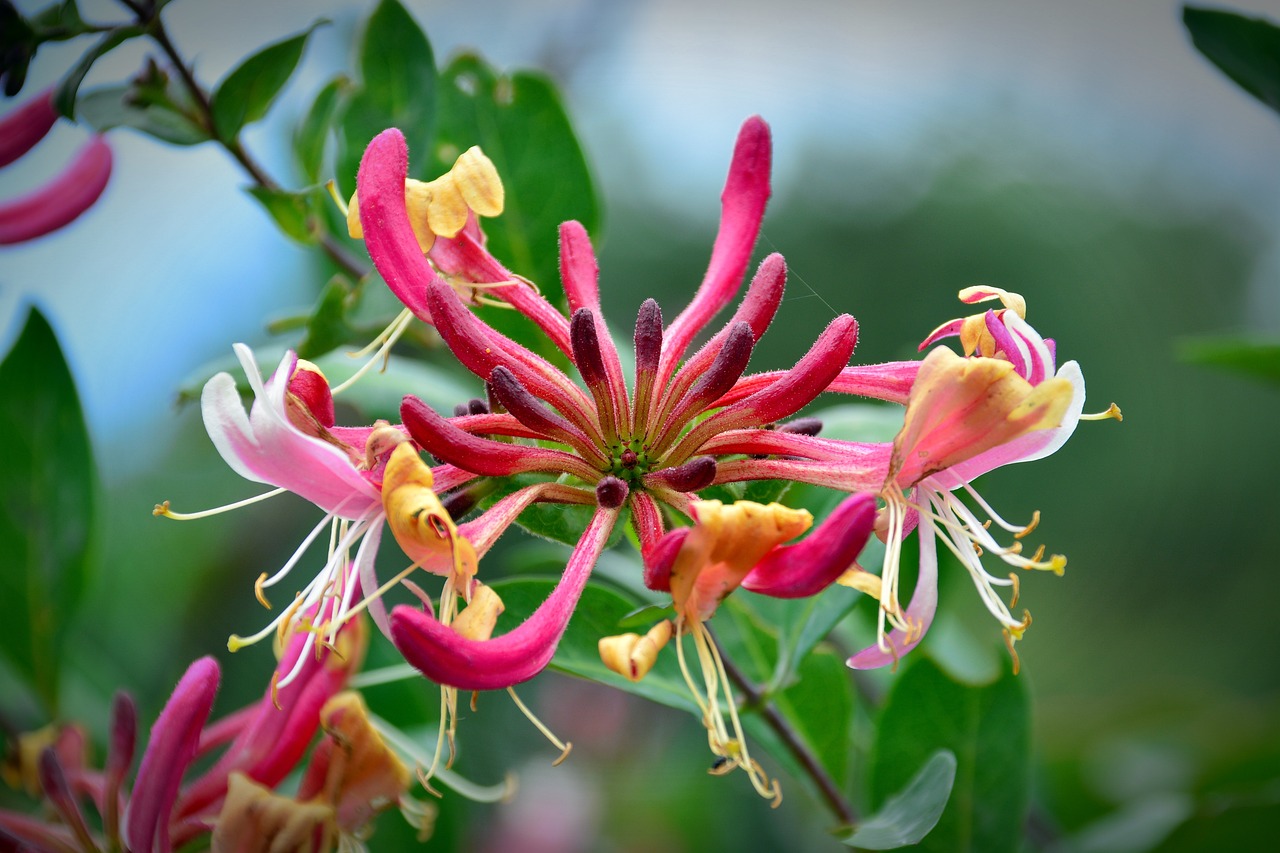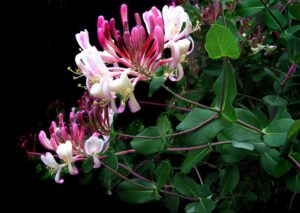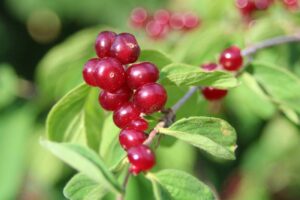Honeysuckle
Overview
The Honeysuckle plant enchants with sweetly scented, nectar-rich blooms and serves as a low-maintenance gem for gardeners. Belonging to the Lonicera species, this hardy climber or shrub thrives in sun-kissed spots with cool roots, delivering summer beauty while inviting a symphony of pollinators to the garden.

Characteristics
Known for its sweet fragrance, tubular flowers, and vigorous, twining growth habit.
Region
Honeysuckle is commonly grown in a variety of regions, particularly hardy in USDA Zones 4 through 8.
Natural Habitat
Honeysuckle is typically found in woodlands, hedgerows, and along the edges of forests.
Cultivation
Prefers full sun to partial shade, moderate watering, and well-drained, acidic to neutral soil.
Uses and Benefits
Honeysuckle, or Lonicera species provides a number of appealing attributes perfect for home gardens and wildcrafting spaces. Here are the key uses and benefits of this versatile plant:
- Aesthetic Appeal: Its beautiful blooms add color and fragrance, enhancing garden landscapes.
- Coverage: Ideal for covering walls and buildings, creating natural privacy screens.
- Hardiness: Tolerates heat and drought conditions once established, making it a robust addition to gardens[2].
- Wildlife Attraction: Flowers attract pollinators like bees and butterflies, supporting local ecosystems.
- Low Maintenance: Requires minimal care post-establishment, offering a hands-off approach to gardening[1].
- Naturalization: Easily adapts and can spread throughout different regions, effortlessly integrating with local flora.
- Sunlight Adaptation: Thrives when flowering tops are exposed to full sun or partial shade, with shaded roots preserving moisture[3] [5].
As a resilient and adaptable plant, Lonicera is a top choice for those who want to enjoy a lush garden without

Cultivation Tips
To grow healthy Honeysuckle plants, proper cultivation is key. Here are some tips to help your Honeysuckle thrive:
- Ensure your Honeysuckle gets a balance of sunlight and shade: the roots do well in cooler, shaded areas while the flowering tops prefer sunny spots or partial shade.
- Plant in soil with a pH that is acidic to neutral for optimal growth.
- Although these plants are drought-tolerant, regular watering during dry spells can promote more robust growth.
- Consider the plant’s vigor and growth rate—Honeysuckle can spread quickly and benefit from occasional pruning to maintain shape and health.
- Bear in mind the hardiness zone of your area; Honeysuckle plants do well in Zones 4-8, but local climate should influence planting time and care routines.
With these conditions met, Honeysuckle can be a low-maintenance yet vibrant addition to your garden2 3 5.
Seasonal Considerations
For gardeners looking to grow Honeysuckle, understanding seasonal considerations is crucial. This vine flourishes in Zones 4 through 8, and its peak blooming period is in summer, showcasing fragrant, tubular flowers that often attract pollinators. Below are key points to bear in mind throughout the year:
- Spring: Plant or prune your Honeysuckle when the threat of frost has passed to promote healthy growth.
- Summer: Regular watering helps during dry spells, though Honeysuckle is drought-tolerant once established.
- Fall: After flowering, prune selectively to maintain shape and remove any invasive spreading.
- Winter: Though Honeysuckle is generally hardy, consider a mulch layer to protect the roots in cooler regions.
Be sure to situate your Honeysuckle where the roots are shaded but the flowering tops can bask in sunlight for best performance3.

Issues and Troubleshooting
While Honeysuckle (Lonicera spp.) is generally low-maintenance, it may face some common issues. Inadequate sunlight can hinder bloom, so ensure the plant receives sufficient light while keeping roots shaded.
Overly wet, poorly drained soils can lead to root rot. Monitor soil conditions and ensure proper drainage. Pests like aphids and powdery mildew can also affect the plant. Combat aphids with a strong water spray or use insecticidal soaps, and manage mildew by spacing plants to improve air circulation and applying fungicides if necessary1 2 3. Regular inspections and prompt action can keep your Honeysuckle thriving.
History and Folklore
Honeysuckle, belonging to the genus Lonicera, has a rich tapestry of history and folklore woven into its fragrant blooms. In ancient times, these sweet-scented flowers symbolized love and affection due to their ability to attractively intertwine as they climbed. This enduring plant was often used to adorn the exteriors of homes, an act believed to bring good fortune to the inhabitants. Further, the name itself is derived from the edible honey-like nectar accessible within the flower – a trait that naturally lent the plant to be associated with sweetness and delight in life. Honeysuckle’s prolific growth was also likened to spiritual growth, suggesting a path of enlightenment for those who appreciated its beauty and resilience.
References
1. Common Honeysuckle: Care and Growing Guide – The Spruce, https://www.thespruce.com/common-honeysuckle-profile-5179221
2. Growing Honeysuckle: How to Plant and Care for This Flowering Vine, https://morningchores.com/growing-honeysuckle/
3. Growing Honeysuckle: Your Guide to Growing Honeysuckle Vines – Gilmour, https://gilmour.com/growing-honeysuckle
4. How to grow honeysuckle: when, where and varieties to plant, https://www.homesandgardens.com/gardens/how-to-grow-honeysuckle
5. Honeysuckle: How to Grow and Care for Honeysuckle Vines | Almanac.com, https://www.almanac.com/plant/honeysuckle
Image Credit: bernswaelz
Image Credit: Buntysmum
Image Credit: HeckiMG
Nicolas Duval
Nicolas is a passionate advocate for nature and the art of wildcrafting. His dedication shines through in Wildcraftia, a website he meticulously crafted to serve as a haven for nature enthusiasts worldwide. Driven by a deep appreciation for nature’s connection to humanity, Nicolas embarked on his journey in 2011 with SmokableHerbs, a platform showcasing his love for nature’s bounty. Building upon this foundation, he established Smokably, a thriving online store offering premium herbs and blends to a global audience.
